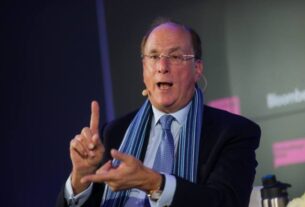Have you saved enough for retirement? It’s a question that sits at the center of financial planning for countless households, especially when the future looks uncertain and the goalposts seem to move with every market shift. For Richard and Claire, the question is not hypothetical but pressing, shaped by a distinctive pair of financial realities: Richard, at 64, already considers himself financially retired, yet continues to work across three early-stage companies to pursue work he enjoys and to pay himself what he describes as the bare minimum. This arrangement yields a modest annual income of £12,570. In contrast, Claire, at 61, brings in a substantial salary as a partner at a law firm—about £250,000 per year—though Richard notes that this level of earnings can be somewhat volatile. Together, their situation highlights the complexity of retirement planning when one partner’s income is stable but modest and the other’s is high yet unpredictable. The central task they face is a rigorous assessment of their assets, how those assets are deployed, and whether the current mix can support their envisioned retirement lifestyle amid ongoing uncertainties.
Assessing Assets and Cash Flows in Retirement: The Core Task
In any retirement planning scenario, the foundation is a precise, holistic appraisal of what you own, what you owe, and how those resources can be mobilized over the long horizon of retirement. For Richard and Claire, the key variables include their asset base (savings, investments, and any business interests tied to Richard’s ongoing work), their current and projected income streams, and their fixed and discretionary expenditures. A central question—“Have I saved enough?”—must be reframed not as a single answer but as a dynamic, scenario-driven assessment that accounts for longevity risk, market performance, inflation, health costs, and potential changes in income.
The first step is to inventory every asset class and income source:
-
Liquid assets: cash reserves, money market funds, and any short-duration investments that can be accessed quickly without significant penalties. These provide a buffer for unexpected expenses and portfolio rebalancing needs.
-
Investment portfolio: the mix of equities, fixed income, and any alternative assets, including real estate or private holdings. The risk profile should reflect both Richard’s and Claire’s tolerance for volatility and their timelines, with consideration given to how much risk can be absorbed without compromising essential cash flow.
-
Pension rights and defined contribution plans: any employer-sponsored plans, personal pensions, or other retirement vehicles should be quantified in terms of current value, projected growth, and withdrawal rules. This includes understanding annuity options or lifetime income products if applicable.
-
Business interests and entrepreneur income: Richard’s involvement with three early-stage companies represents a potentially meaningful but illiquid asset class. The value of these holdings depends on the success of the ventures, the ability to extract cash flow, and the timing of liquidity events. This category carries higher risk and higher potential upside, which must be reflected in the overall risk posture.
-
Real estate and property: ownership of homes or rental properties can provide housing security, potential rental income, or capital appreciation. The liquidity of real estate tends to be slower, so its role in short-term cash flow differs from more liquid assets.
-
Liabilities and contingencies: any debt obligations, mortgage carryings, or planned large expenditures (education, care costs, or major renovations) need to be modeled to ensure they do not erode retirement sustainability.
With the asset, income, and liability inventory in hand, the next stage is to construct a comprehensive cash-flow model. This involves forecasting:
-
Baseline living expenses: essential costs (housing, food, utilities, healthcare, transportation) and discretionary spending (travel, leisure, gifts). A careful separation between needs and wants allows for resilience during market downturns or revenue pauses.
-
Income streams: Richard’s fixed, low-level income from continuing work and the variability of Claire’s earnings as a high-earning partner in a law firm. The contrast between a defined, stable floor and a volatile upside must be captured accurately to avoid overreliance on any single source.
-
Withdrawal strategies: determining a sustainable withdrawal rate from the portfolio, adjusting for inflation, tax considerations, and the potential need to preserve capital for long-term health costs or unforeseen events. A common starting point for discussion is the concept of a sustainable withdrawal rate, while acknowledging unique circumstances—like one partner maintaining work to a minimal level for enjoyment rather than necessity.
-
Tax efficiency and planning: optimizing withdrawals, pension income, and investments to minimize tax leakage over the lifetime. In cases where income sources shift (as with Claire’s volatile earnings), tax planning can become a crucial element of overall stability.
-
Stress testing and scenario analysis: evaluating how the portfolio might perform under different market regimes, including prolonged downturns, sudden spikes in healthcare costs, or changes in income. This helps identify resilience gaps and guide hedging or reallocation decisions.
To ensure the plan remains robust over time, it is essential to build in regular review points—annual or semi-annual check-ins—where assumptions are revisited in light of actual performance, changes in health status, and evolving personal goals. The goal is not to produce a perfect forecast but to craft a resilient framework that adapts to real-world dynamics while keeping Richard and Claire aligned on their shared objectives.
Income Stability and Risk Management: Handling One Stable and One Volatile Income
The juxtaposition of a stable cash flow from Claire’s high-earning legal career and Richard’s modest, nearly residual income presents a unique risk profile. Stability and volatility can coexist in a retirement plan, but they require deliberate design choices to prevent one partner’s volatility from cascading into the couple’s overall financial security.
One of the central considerations is asset- and liability-driven diversification that reduces reliance on any single income stream. A few practical approaches include:
-
Building a robust emergency fund: having a liquidity buffer that can cover 12 to 24 months of essential living expenses helps the couple weather fluctuations in Claire’s income without triggering forced asset sales or disruptive portfolio withdrawals.
-
Aligning withdrawals with income seasonality: if Claire’s income experiences seasonal or annual volatility, the plan could aim to offset shortfalls with drawdown from savings during lean periods, while preserving principal for longer-term growth in favorable years.
-
Creating a tiered withdrawal framework: a base level of guaranteed cash flow from more stable assets (such as cash-equivalents, high-quality bonds, or annuity-like products) can support essential expenses, while discretionary spending and growth-focused allocations draw from more volatile investments.
-
Tax-aware income management: given Claire’s high earnings, efficient tax planning may help maximize after-tax cash flow, reducing the need to draw down capital during peak earning years. In some strategies, retrospective rebalancing and tax-loss harvesting can improve net income.
-
Consideration of career and work-life preferences: Richard’s choice to continue in three early-stage companies, even at a bare-minimum compensation, serves both personal and practical purposes. This arrangement can be framed as a hybrid approach to retirement—retirement in intention, but ongoing engagement in meaningful work that produces non-primary income and personal satisfaction. The plan should acknowledge this, balancing the social and psychological benefits with the financial implications.
-
Contingency planning for health and longevity: as life expectancy extends, the possibility of longer retirements increases. This elevates the importance of planning for healthcare costs, long-term care, and potential changes in family circumstances, including caregiver needs.
In practice, the combination of Claire’s volatility and Richard’s minimal earnings implies that the couple should emphasize risk mitigation, liquidity, and flexible spending. It’s prudent to design a portfolio that can withstand periods of market stress, without forcing premature or forced withdrawals. The strategy should also prioritize maintaining freedom to adapt as circumstances evolve, whether that means adjusting discretionary spending, revisiting work arrangements, or rebalancing the asset mix in response to changing interest rates or inflation.
The Role of Work in Retired Life: Why Some People Choose to Keep Working
Richard’s statement that he is already financially retired, yet continues to work for enjoyment and to sustain a “bare minimum” income, reflects a broader nuance in retirement planning. For many retirees, work remains an essential component of life for non-financial reasons, and it can play a critical role in the overall financial plan by:
-
Providing purpose and routine: work can offer structure, social interaction, and a sense of identity beyond financial metrics. This is particularly valuable for individuals who solved the accumulation problem but still seek meaning, challenge, or collaboration with others.
-
Supplemental income: even modest earnings can help reduce withdrawal needs from the portfolio, effectively extending the life of assets and providing a buffer against market volatility. In Richard’s case, the £12,570 annual income from his work can cushion the portfolio during lean years, while enabling him to maintain a preferred lifestyle.
-
Tax-advantaged or strategic income: the decision to pay himself the bare minimum through his business may align with tax planning or personal goals, allowing for capital preservation and potential business benefits, such as continued equity participation or future liquidity opportunities.
-
Risk management through diversification of income: by not relying exclusively on Claire’s high and volatile salary, the couple reduces the risk of a single income disruption driving them into a crisis. The distribution of income across multiple streams can stabilize cash flow during retirement.
-
Health, fertility, and family considerations: ongoing work may intersect with health status, caregiving responsibilities, or family plans. The plan should consider whether continuing to work aligns with health, energy levels, and the desired pace of retirement.
From a policy perspective, the decision to maintain part-time or project-based work in retirement often requires thoughtful alignment with long-term financial goals. It invites analysis of how different sources of income interact with asset withdrawals and tax obligations, as well as how they influence decisions about accelerations or delays in selling assets, rebalancing risk, and planning for future contingencies.
For Richard and Claire, this dynamic means recognizing that retirement is not a binary state. It is a continuum that can incorporate purposeful work, strategic income diversification, and disciplined asset management. The challenge is to preserve financial security while preserving flexibility to adapt to changing circumstances, and to ensure that the couple’s life goals remain consistent with the broader plan.
Planning Under Uncertainty: Market Fluctuations, Inflation, and Longevity
Uncertainty is a constant in retirement planning. For Richard and Claire, who face a blend of high earnings and lower, steadier income, the key is to develop a plan that withstands market volatility, adapts to inflation, and contends with longevity risk. This involves a multi-faceted approach that blends investment discipline, prudent spending, and forward-looking scenario planning.
First, consider the macro picture and its implications for retirement assets. Markets fluctuate, interest rates ebb and flow, and inflation erodes purchasing power over time. A plan anchored only to recent performance risks becoming outdated as conditions shift. A disciplined framework should include:
-
Investment neutrality and risk tolerance: ensuring the asset allocation aligns with their combined willingness to withstand short-term losses for long-term gains. The presence of a volatile income (Claire’s earnings) necessitates resilience in the investment portfolio and clear guardrails for risk exposure.
-
Inflation protection: as prices rise over time, the real value of withdrawals can erode without adequate hedges. A diversified portfolio that includes inflation-sensitive assets, such as equities with pricing power or real assets, can help mitigate this risk.
-
Longevity planning: with longer life expectancies, the probability of outliving assets grows if withdrawals are not carefully managed. This underscores the importance of stress testing for extended retirements and planning for ongoing healthcare costs and potential long-term care.
-
Liquidity management: maintaining access to cash and liquid investments is essential for meeting essential expenses, especially during periods of market stress or unexpected costs. Sufficient liquidity reduces the need to sell investments at unfavourable times.
-
Tax optimization across regimes: as incomes and withdrawals shift, tax considerations become more complex. A forward-looking tax plan can smooth cash flows and minimize after-tax costs, preserving more of the portfolio for long-term growth and resilience.
Second, execute scenario planning to examine how various futures could unfold:
-
Baseline scenario: moderate market growth, stable inflation, and stable income from Claire with minimal adjustments to Richard’s work pattern.
-
Downside scenario: a prolonged market downturn, higher healthcare costs, potential reductions in Claire’s earnings, and the need to rely more heavily on asset withdrawals.
-
Upside scenario: strong performance from Claire’s legal practice, possible liquidity events from Richard’s business ventures, and opportunities for strategic asset reallocation to capture growth.
-
Interest-rate shock scenario: changes in the yield environment affecting bonds and income-producing assets, requiring rebalancing to maintain cash flow.
-
Healthcare cost surge scenario: unexpected medical expenses that could strain budgets, necessitating contingency funds and the possible need for long-term care planning.
Each scenario should feed into a revised cash flow forecast and a re-optimized asset allocation. The goal is not to predict the future with certainty but to maintain preparedness and flexibility, ensuring that Richard and Claire can meet essential needs while pursuing their preferred lifestyle.
Strategies to Align Assets with Goals: Diversification, Tax Efficiency, and Estate Considerations
To translate the broad framework into actionable steps, a set of strategic moves can help align Richard and Claire’s assets with their retirement goals. These strategies address diversification, tax efficiency, liquidity, and longer-term considerations such as estate planning and intergenerational wealth transfer.
-
Diversification across asset classes and risk profiles: a well-diversified portfolio reduces exposure to any single risk factor. Given Claire’s volatile earnings, diversification becomes even more critical. A blended mix of equities for growth, high-quality fixed income for stability, and alternative assets with low correlation to traditional markets can help smooth returns.
-
Tactical rebalancing and glide paths: as markets move, periodic rebalancing ensures that risk exposure remains aligned with the plan. A glide path approach—adjusting risk exposure as retirement approaches—can help transition toward more conservative investments while preserving upside potential during favorable periods.
-
Tax-efficient withdrawal sequencing: drawing from taxable accounts, tax-advantaged accounts, and tax-deferred sources in a strategically ordered manner can minimize tax liabilities and extend the life of the portfolio. This approach might involve coordinating Claire’s high-income years with planned withdrawals to optimize after-tax cash flow.
-
Income protection and hedging: for a couple relying on one partner’s significant earnings plus a modest post-retirement draw, implementing insurance or hedges against major income shocks could be prudent. This could include disability coverage or other risk-management tools designed to preserve cash flow.
-
Real estate and liquidity planning: real estate holdings can act as a store of value and potential cash flow but may lack liquidity when markets are stressed. A structured plan for aligning real estate exposure with liquidity needs ensures that it supports rather than undermines overall stability.
-
Estate and succession planning: even if the current focus is on maintaining daily financial security, an orderly approach to estate planning—wills, trusts, power of attorney, and healthcare directives—provides clarity for heirs and reduces potential friction during transitions. Integrating these elements with retirement planning creates a cohesive, forward-looking strategy.
-
Education and advisory support: given the complexity of balancing a high-earning, volatile income with a lower guaranteed stream, professional guidance can be invaluable. A financial advisor or retirement planning specialist can help translate the plan into implementable steps, monitor progress, and adjust as life circumstances change.
Each of these strategies should be tailored to Richard and Claire’s unique profile, balancing the need for growth with the imperative of protection. The overarching aim is to create a sustainable, flexible blueprint that supports their preferences for work, life, and purpose while maintaining financial confidence across decades.
A Custom Framework for Richard and Claire
Applying the above principles to Richard and Claire’s specific situation yields a tailored framework designed to address both the quantitative and qualitative elements of their retirement planning. The framework centers on three pillars: cash-flow resilience, wealth preservation, and purposeful engagement with work.
- Cash-flow resilience:
- Maintain an emergency cushion that covers essential living costs for at least 12–24 months, reducing the risk of forced asset sales during market downturns.
- Establish a base income floor from liquid, low-risk assets that covers essential expenses, supplemented by Richard’s modest annual income from his ongoing work to bridge any gaps.
- Optimize Claire’s reported earnings to maximize after-tax cash flow and to minimize reliance on portfolio withdrawals during peak earning years.
- Wealth preservation:
- Construct a diversified portfolio with meaningful exposure to growth assets balanced by high-quality fixed-income instruments to reduce drawdown risk.
- Implement a disciplined withdrawal strategy that respects inflation and longevity, with predefined guardrails to prevent rapid depletion of capital during adverse markets.
- Consider strategic use of tax-advantaged accounts and tax-efficient withdrawal sequencing to preserve after-tax wealth.
- Purposeful engagement with work:
- Recognize Richard’s continued involvement with three early-stage companies as a deliberate choice that adds value beyond financial metrics. Document the expected time commitment, risk exposure, and potential liquidity implications.
- Use the ongoing work as a flexible component of the plan, designed to supplement income and hedge against portfolio risk, while aligning with personal interests and life goals.
- Evaluate the role of Claire’s earnings in achieving desired lifestyle, ensuring that her income supports the plan without creating disproportionate risk if circumstances change.
Implementing this framework requires concrete steps, milestones, and ongoing monitoring. Regular reviews—at least annually, with interim check-ins after significant life events, market shifts, or changes in income—will help keep the plan aligned with reality. The framework also supports transparent communication between Richard and Claire, ensuring that both partners understand the assumptions, trade-offs, and implications of any adjustment.
Smaller but Crucial Details: Practical Considerations and Risk Flags
While the overarching plan focuses on long-term resilience, several practical details deserve attention to prevent small issues from growing into large problems:
-
Healthcare preparedness: as retirement approaches, healthcare costs can be a major consideration. A plan that anticipates potential medical needs, insurance gaps, and long-term care costs helps keep liquidity sufficient to cover unexpected health events.
-
Inflation resilience: prices rise over time, eroding purchasing power. A portfolio with inflation-hedging potential and spending rules designed to maintain real purchasing power is essential to long-term comfort.
-
Longevity risk: the possibility of longer-than-expected lifespans requires that the plan avoid excessive withdrawal rates that could deplete assets prematurely. A gradual glide toward more conservative investments, combined with a sustainable withdrawal framework, helps guard against this risk.
-
Market regime shifts: the investing environment will change—sometimes rapidly. The plan should be flexible enough to adjust to a new regime, whether it means rebalancing toward more defensive assets or seeking growth opportunities in different sectors.
-
Family and social considerations: retirement is not purely financial. Time with family, social relationships, and personal fulfillment play a critical role. Ensuring the plan accommodates these aspects without compromising financial goals contributes to overall well-being.
-
Liquidity for life events: major life moments—such as travel, relocation, or unexpected family needs—can require significant liquidity. Maintaining a portion of assets in accessible form helps smooth transitions and reduces stress.
By keeping a close eye on these practical factors, Richard and Claire can reduce the likelihood of deficits or distress during retirement while preserving the flexibility to adjust as their circumstances evolve.
Conclusion
Richard, 64, and Claire, 61, stand at a pivotal moment in their financial journey, facing the timeless question of whether they have saved enough to sustain the retirement they envision. Richard’s financial retirement status, tempered by his ongoing work at three early-stage companies and a modest £12,570 annual income, sits alongside Claire’s substantial but volatile earnings of around £250,000 as a law firm partner. Their situation underscores a fundamental truth of modern retirement planning: the answer is not a single yes or no, but a nuanced assessment that integrates asset bases, income stability, risk tolerance, and personal goals over a long horizon.
This article has explored a comprehensive framework for evaluating assets and cash flows, balancing one partner’s stable income with the other’s volatility, and recognizing the value of purposeful work in retirement. It has outlined how to build a resilient plan that can weather market fluctuations, inflation, and longevity, while preserving the ability to enjoy life today and tomorrow. The path forward for Richard and Claire involves detailed asset mapping, disciplined cash-flow planning, and ongoing collaboration to adjust assumptions as life evolves. It also emphasizes that retirement planning is as much about psychology and meaning as it is about numbers, and that a well-structured plan can harmonize financial security with personal fulfillment.
If they choose to move forward with these principles, their next steps would include conducting a precise asset inventory, developing a formal cash-flow model, and scheduling regular reviews to recalibrate the plan in response to changing conditions. By prioritizing liquidity, diversification, and tax efficiency, and by maintaining open dialogue about goals and expectations, Richard and Claire can create a retirement strategy that not only answers the question “Have I saved enough?” but also supports a meaningful, secure, and fulfilling life well into the future.



